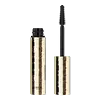What's inside
What's inside
 Key Ingredients
Key Ingredients

 Benefits
Benefits

 Concerns
Concerns

 Ingredients Side-by-side
Ingredients Side-by-side

Isododecane
EmollientCera Alba
EmollientCopernicia Cerifera Cera
EmollientDisteardimonium Hectorite
StabilisingDilinoleic Acid/Butanediol Copolymer
Water
Skin ConditioningAllyl Stearate/Va Copolymer
Oryza Sativa Cera
Skin ConditioningParaffin
PerfumingAlcohol Denat.
AntimicrobialPolyvinyl Laurate
Vp/Eicosene Copolymer
Propylene Carbonate
SolventSynthetic Beeswax
Emulsion StabilisingEthylenediamine/Stearyl Dimer Dilinoleate Copolymer
Skin ConditioningPEG-30 Glyceryl Stearate
EmulsifyingPanthenol
Skin ConditioningPentaerythrityl Tetra-Di-T-Butyl Hydroxyhydrocinnamate
AntioxidantBHT
AntioxidantIron Oxides
Isododecane, Cera Alba, Copernicia Cerifera Cera, Disteardimonium Hectorite, Dilinoleic Acid/Butanediol Copolymer, Water, Allyl Stearate/Va Copolymer, Oryza Sativa Cera, Paraffin, Alcohol Denat., Polyvinyl Laurate, Vp/Eicosene Copolymer, Propylene Carbonate, Synthetic Beeswax, Ethylenediamine/Stearyl Dimer Dilinoleate Copolymer, PEG-30 Glyceryl Stearate, Panthenol, Pentaerythrityl Tetra-Di-T-Butyl Hydroxyhydrocinnamate, BHT, Iron Oxides
Water
Skin ConditioningTribehenin
EmollientPEG-40 Stearate
EmulsifyingPotassium Cetyl Phosphate
EmulsifyingSorbitan Stearate
EmulsifyingVp/Va Copolymer
Glyceryl Stearate
EmollientAcrylates/Ethylhexyl Acrylate Copolymer
Vp/Eicosene Copolymer
Acacia Senegal Gum
MaskingCera Alba
EmollientButylene Glycol
HumectantCetyl Alcohol
EmollientOryza Sativa Bran Wax
Skin ConditioningSorbitol
HumectantMannitol
HumectantPanthenol
Skin ConditioningPhenoxyethanol
PreservativeCaprylyl Glycol
EmollientDimethicone
EmollientHydroxyethylcellulose
Emulsion StabilisingPolyglyceryl-6 Distearate
EmulsifyingPotassium Sorbate
PreservativeSodium Dehydroacetate
PreservativeStearyl Stearate
EmollientStearyl Palmitate
EmulsifyingAscorbyl Palmitate
AntioxidantTocopherol
AntioxidantParaffin
PerfumingCetyl Palmitate
EmollientCetyl Stearate
EmollientSodium Hydroxide
BufferingSodium Stearate
CleansingLaureth-21
CleansingBehenic Acid
CleansingStearic Acid
CleansingCera Microcristallina
Emulsion StabilisingArachidic Acid
CleansingPalmitic Acid
EmollientCI 77891
Cosmetic ColorantCI 42090
Cosmetic ColorantCI 19140
Cosmetic ColorantWater, Tribehenin, PEG-40 Stearate, Potassium Cetyl Phosphate, Sorbitan Stearate, Vp/Va Copolymer, Glyceryl Stearate, Acrylates/Ethylhexyl Acrylate Copolymer, Vp/Eicosene Copolymer, Acacia Senegal Gum, Cera Alba, Butylene Glycol, Cetyl Alcohol, Oryza Sativa Bran Wax, Sorbitol, Mannitol, Panthenol, Phenoxyethanol, Caprylyl Glycol, Dimethicone, Hydroxyethylcellulose, Polyglyceryl-6 Distearate, Potassium Sorbate, Sodium Dehydroacetate, Stearyl Stearate, Stearyl Palmitate, Ascorbyl Palmitate, Tocopherol, Paraffin, Cetyl Palmitate, Cetyl Stearate, Sodium Hydroxide, Sodium Stearate, Laureth-21, Behenic Acid, Stearic Acid, Cera Microcristallina, Arachidic Acid, Palmitic Acid, CI 77891, CI 42090, CI 19140
Ingredients Explained
These ingredients are found in both products.
Ingredients higher up in an ingredient list are typically present in a larger amount.
Cera alba is beeswax, or the wax used by bees to make honeycombs. It is a texture-enhancer and emollient. A study from 2003 found beeswax to be a stronger emollient than ingredients such as petroleum jelly.
As an emollient, beeswax helps hydrate the skin by creating a barrier on top. This barrier traps moisture in.
Emulsifiers help prevent ingredients from separating. This helps create consistent texture.
The structure of beeswax is mainly long-chain alcohols and the esters of fatty acids.
There are three types of beeswax: yellow, white, and absolute. Yellow is pure beeswax taken from the honeycomb. White beeswax is created by filtering or bleaching yellow beeswax. Absolute beeswax is created by treating beeswax with alcohol. Beeswax used in cosmetics are purified.
Beeswax has been used throughout history and even in prehistoric times. Some common uses for beeswax still used today are making candles, as a waterproofing agent, and polish for leather.
Learn more about Cera AlbaPanthenol is a common ingredient that helps hydrate and soothe the skin. It is found naturally in our skin and hair.
There are two forms of panthenol: D and L.
D-panthenol is also known as dexpanthenol. Most cosmetics use dexpanthenol or a mixture of D and L-panthenol.
Panthenol is famous due to its ability to go deeper into the skin's layers. Using this ingredient has numerous pros (and no cons):
Like hyaluronic acid, panthenol is a humectant. Humectants are able to bind and hold large amounts of water to keep skin hydrated.
This ingredient works well for wound healing. It works by increasing tissue in the wound and helps close open wounds.
Once oxidized, panthenol converts to pantothenic acid. Panthothenic acid is found in all living cells.
This ingredient is also referred to as pro-vitamin B5.
Learn more about PanthenolParaffin is a solid created from petroleum. The term 'paraffin' can also refer to either
petroleum jelly or mineral oil.
It has natural occlusive properties which can worsen oily skin. Due to its petrolatum base, this ingredient is not fungal-acne safe.
We don't have a description for Vp/Eicosene Copolymer yet.
Water. It's the most common cosmetic ingredient of all. You'll usually see it at the top of ingredient lists, meaning that it makes up the largest part of the product.
So why is it so popular? Water most often acts as a solvent - this means that it helps dissolve other ingredients into the formulation.
You'll also recognize water as that liquid we all need to stay alive. If you see this, drink a glass of water. Stay hydrated!
Learn more about Water